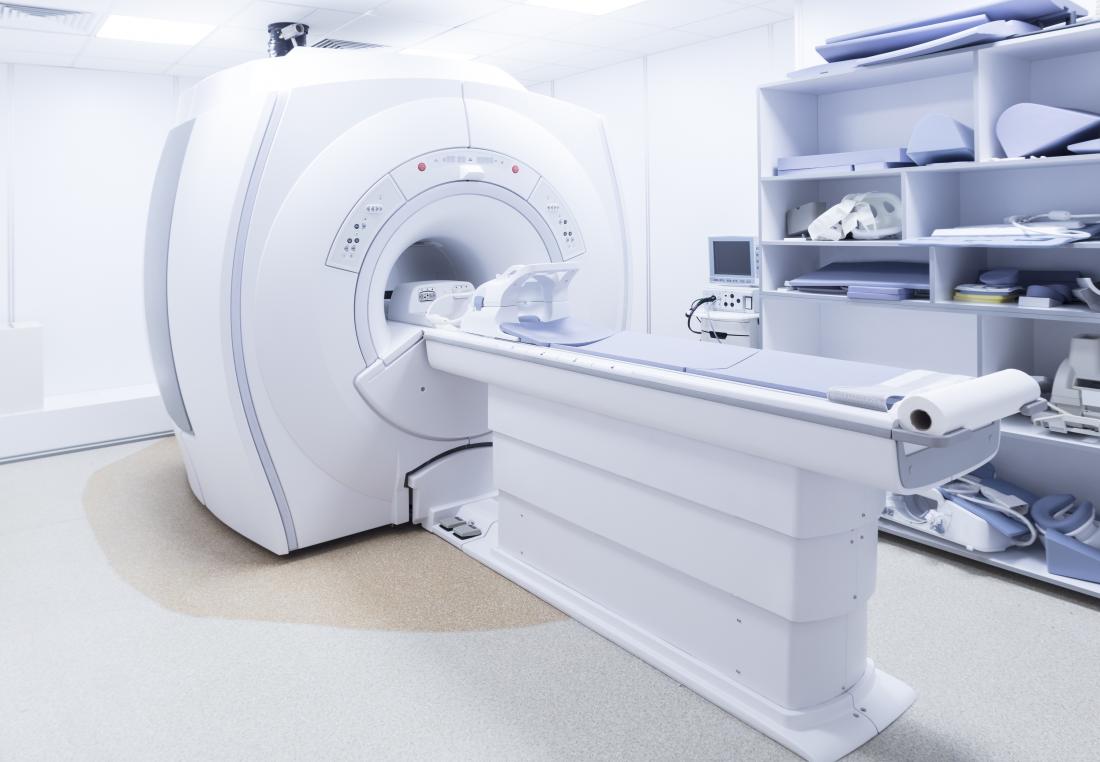Magnetic resonance imaging (MRI) scans provide 3-D images of specific body parts. The scan produces highly detailed images from every angle. Depending on the purpose of the scan, a doctor may recommend contrast, which is a substance that a person takes beforehand. It helps the images to be more clearly defined.
An MRI scan is painless and noninvasive. The length of the procedure varies, depending on the situation.
In this article, we take a close look at head MRI scans in adults and children. We discuss their uses, what to expect during a scan, and how a person receives the results.
Purpose and uses of head MRI scans

An MRI scan can provide detailed imagery of soft tissue.
MRI scans allow doctors to see what is happening inside the body. These scans do not produce radiation, unlike CT scans and X-rays.
MRI scans use strong magnetic forces and radio waves to create images. They can scan bone, organs, and tissue, which makes them ideal for a complex body part like the head.
MRI scans show a higher level of detail than other imaging techniques, especially in soft tissue. This is important when examining the brain or brain stem for damage or disease.
A doctor may recommend an MRI head scan if they suspect that a person has:
Procedure and what to expect during a head MRI
A head MRI is noninvasive. When a person arrives at the clinic, a doctor or technician will talk them through the process and tell them what to expect.
Preparation
First, a healthcare professional will ask a series of questions about a person’s medical history.
Radiographers also need to know if a woman is pregnant. Doctors tend not to recommend MRI scans during pregnancy, because it is unclear whether the magnetic force can affect fetal development.
They will also ask if a person has any metallic objects, such as piercings, metal plates, watches, or jewelry. These can interfere with the scan, and a person must remove them before entering the scanner.
Other metallic objects that can interfere with a scan include:
- brain aneurysm clips
- cochlear implants
- dental fillings and bridges
- eye implants
- metallic fragments in the eyes or blood vessels
- metal plates, wires, screws, or rods
- surgical clips or staples
A healthcare team member will usually ask a person to put on a hospital gown. They will store a person’s clothes and any jewelry in a safe locker until the scan is finished.
During the scan
The technician will bring the person into the room that contains the MRI scanner. The person will lie on a sliding trolley, and the technician may cover them with a sheet.
The technician will then position the trolley so that the person’s head and neck are inside the MRI scanner. They will leave the room and speak to the person through a radio.
People should be aware of the following:
- Pillows or foam blocks on the trolley will keep the head in the right position.
- MRI machines make a lot of noise, so expect to hear loud hums, knocking sounds, and general electronic noise. Technicians will usually provide headphones or earplugs.
- People must stay very still inside the scanner to ensure clear, accurate images. If a person moves, they may have to repeat the scan. If someone, such as a person with Parkinson’s, has trouble lying still, a technician may offer restraints to help.
- Every MRI machine has a call button. If a person feels anxious or wants to stop the procedure, they can press the call button and talk to the medical staff.
- Most tattoos are safe in an MRI. However, some inks contain traces of metal, which can cause heat or discomfort during a scan. If a person feels any discomfort, they should tell the radiographer.
The medical team may offer anesthetics or sedatives to people who have extreme claustrophobia.
If a person has taken a sedative, they should avoid driving themselves home. Also, a person needs time to recover from an anesthetic at the medical center. In the event of an allergic reaction, the healthcare team will keep the person under observation.
Types of MRI scanner

MRI machines come in a range of sizes.
Several types of scanners can provide a head MRI. The size of the machine will depend on the purpose of the scan and whether the person has claustrophobia.
Types of scanner include:
- Closed bore. These look like enormous tubes, which a person enters by lying on a sliding bench.
- Short bore. In this type of machine, the tubular part is shorter, making it less likely to trigger claustrophobia.
- Wide bore. The opening of the tubular area can be around 70 centimeters in these machines.
- Open MRI. These come in a variety of shapes. They can have an open side or top.
The narrower the bore, the more detailed the image will be.
Head MRI scans with contrast vs. no contrast
Contrast is a magnetic substance. If a person drinks or receives an injection of contrast before a scan, it can help to improve the image. The majority of MRI scans do not require contrast.
The doctor and radiologist will decide if contrast is necessary, and a person takes it orally or by injection.
Contrast travels to organs and tissue through the bloodstream. The MRI procedure is the same, whether or not it requires contrast.
Contrast makes tissues and organs stand out on the MRI image. This can illuminate early abnormal tissue growth, including tumors. Receiving an early diagnosis can help improve a person’s outlook.
Scans related to the following issues can require contrast:
There is a small chance that a person may have an allergic reaction to contrast materials. Before administering the contrast, a doctor will ask about:
- allergies
- current medications
- medical history
- recent illnesses or operations
After taking the contrast, a person should check for any side effects. Report any adverse effects to a healthcare provider.
Results
The radiographer will review and interpret the scans. They will then contact the doctor with the results. This can take several days unless it was an emergency scan.
A person can request to see their scans by asking their doctor. The doctor may need a follow-up scan, and they will explain why.
Costs
The costs of an MRI procedure, and how much insurance will cover, varies.
There may also be associated costs, for contrast, anesthesia, and additional procedures.
Speak to the healthcare provider for an accurate estimate.
Head MRI scans in children

A doctor can explain the MRI process to children before undergoing the procedure.
Medical procedures can be scary. It is important for a caregiver to find out the details and explain them to the child beforehand, to reduce any anxiety. Some hospitals have leaflets that help to explain certain procedures.
Head MRI scans for children are almost identical to those for adults. The main difference is the use of a coil.
An MRI coil fits around the child’s head as they lie or sit in the machine because their heads are smaller.
Young children and babies find it hard to stay still for long, and the healthcare provider may recommend an intravenous sedative. The medical team will monitor them throughout the procedure.
Usually, a caregiver stays with the child during the scan. If this is not possible, the caregiver can often wait in the radiographer’s station.
Summary
Head MRI scans are an important tool for diagnosing and monitoring. They can indicate changes in tissue, which is vital in assessing many conditions, particularly those affecting the brain.
Unlike X-rays and CT scans, MRI scans do not involve radiation. They present no risk, apart from triggering certain anxieties or claustrophobia. There are ways to prevent this from happening.
MRI scanners are being improved all the time. With the new generation of scanners, the aim is to cut down scan times and enhance accuracy.
